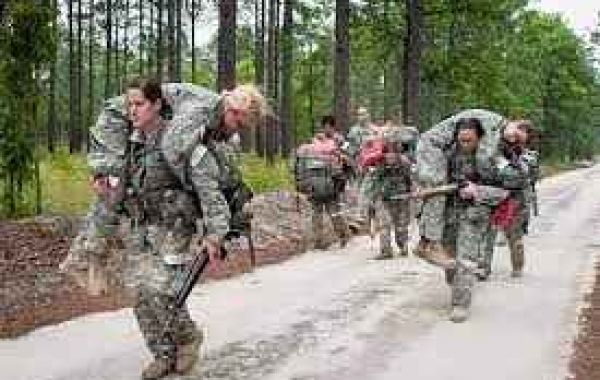Females in Combat MOSs
Women in the army served a reserved role for the greater part of the history. It was until 1973 when the number of women serving in the the US military started rising. The end of the conscription and the establishment of an all-volunteer force induced the participation of more women into the army. In other countries, the army barred females from serving formal roles in combat units. However, women are pushing their agenda to engage in military battles through legal and political means. Hence, this discussion aims at evaluating how much female Soldiers have changed over the history of the Army and touches on female Drill Sergeants. Additionally, it will discuss female soldiers in combat arms MOS and their pros and cons as well as draw a personal reflection.
Changes of Women Soldiers over the History
The changes observed in female soldiers date back to the debates of the 1940s. Notably, the deliberations led to embracing of women, blacks, as well as other ethnic minorities in the US Army. However, this consent did allow limited roles to particular positions. The law restricting female participation in the army was abolished in 1992. The inception of the legislation allowing women to take part in combat ships and warcraft took place the subsequent year. Nonetheless, the US Department of Defense instituted a policy in 1994 that excluded all the women from engaging in ground combat. Consequently, their responsibilities included servicing and supporting units and specialties. Further, 2013 was a groundbreaking period for female soldiers since it is the year when the Secretary of Defense eliminated exclusion for women's participation in ground combat. Therefore, any exclusion in the future depended on the exception instead of the rule. This move was a reversing paradigm from automatic exclusion to automatic inclusion. Other countries such as Denmark (1978) and Sweden (1989) permitted women participation in the military and combat units. The consent given to the female soldiers was a result of the legal and political pressure by women pushing their agenda. Similar trends are observed in China that follows the western model thereby allowing women engagement in the army. Notably, the Chinese military personnel comprises of about four percent females serving in different capacities and institutions. The changes in conditions facing female soldiers have encouraged them to undertake more roles. For instance, Hughes and Hughes point out that their growing presence increased from 42,000 to 167,000 between 1973 and 2010.
Female Drill Sergeants
The increase in the number of women positions in the army has boosted the participation of female drill sergeants. Notably, the US Army intends to increase the number to ensure fair representation of females in the force. Additionally, female drill sergeants expect to constitute the top ten percent of noncommissioned officers that make up the backbone of the army. The increase in female drill sergeants indicates their commitment since the training standards remain the same. Besides, all drill sergeant candidates face the same entry requirements apart from the minimum pushups and maximum two-mile run time. More so, they are subjected to the similar all-encompassing screening process. The growing number of female drill sergeants show how they are gradually taking over a division that has been overshadowed by men for decades. Further, it gives the women the opportunity to train with their male counterpart.
However, female drill sergeants have to overcome several challenges in the course of their work. A notable example includes sexual harassment as noted at Fort Leonard Wood. The base increased the number of women drill sergeants to address the sexual abuse cases that were witnessed there. Nonetheless, officials argue that the move is not likely to combat the issue.
Pros and Cons
Although females are gaining more access to military roles and ground combats, their involvement faces several disadvantages. Foremost, physical ability works against the majority of them since military activities require physicality to handle. Unfortunately, most females do have the capacity to manage the pressure. Physical fitness standards in the army tend to favor men and women who attempt to attain them usually overstretch themselves. Additionally, the activities of combat suit the capabilities of men. Accordingly, most of the women serving in the integrated units have suffered injuries. Moreover, the harassment and resentment that characterize military operations are likely to be a problem for women.
On the other hand, the participation of female soldiers in the army has its advantages. For instance, maintaining a mixed gender force ensures there is a ready military to deploy at any time. Additionally, the declining retention and recruitment facing all-volunteer forces are addressed. Involving both genders widens the applicants’ pool thereby guarantee more willing recruits. Besides, women who commit their services to the army are unlikely to sabotage their obligations by getting pregnant thereby ensuring their availability at any time there is a call of duty.
Personal Reflection
Different perceptions have significantly affected the participation of females in the military. Although some women have served the military since the Revolutionary War, their involvement was limited to nursing, water bearing, cooking, laundering, and saboteurs. The onset of the Civil War forced women to disguise themselves as males to participate. However, I believe that their increased participation has come from various supporting factors. My view is that the public approval of equality has played a significant role. I draw an example from the increased public support for equality in the US owing to the intensified war against terrorism. The reforms formulated to fight terror have waved public opinion backing the change in policy. I contend that denying women equal roles is unfounded in the modern world. More so, the expressed fear for placing females in the battlefront has been dismissed on different grounds. The first cause is the change in perception among the Americans regarding women. The second one is the increasing insufficiency of trenches in contemporary combat and the realization that support workers are never safer than those in the battle line are.
Moreover, I argue that gender is arbitrary if candidates are qualified for a military position. Arguably, recruiting and deploying women who are better in shape as opposed to males sent into warfare. More so, calibrating and training females is possible given the qualifying standards. Experience has proven that supplementary pre-training drills for muscles help in building women’s physical ability. Notably, the advances in technology focused for the battlefield have shown that decision-making requires more than the modest brute strength.
Furthermore, I attest the fact that females are more efficient than men under some situations. Hence, permitting them to engage in military activities doubles the available talent pool needed for delicate and sensitive occupations that further demand for interactive skills common among soldiers. Their involvement also allows army personnel to access the best and strategic forces. Moreover, culture changes over time while masculine subcultures are developing https://bestessaywriters.org/
Although the involvement of women in the army was reserved for limited roles, they have increased in number and responsibilities since 1973. Their increased participation in the military has developed from the state reforms as well as constant pressure from legal and political forces. More so, the way people view female soldiers has changed thereby becoming advocates of women involvement in the army. Female participation in the army should be seen as a positive change in an area that has been dominated by males. In fact, they can perform better than males if given the right training and a conducive environment that supports their contribution to the force.








